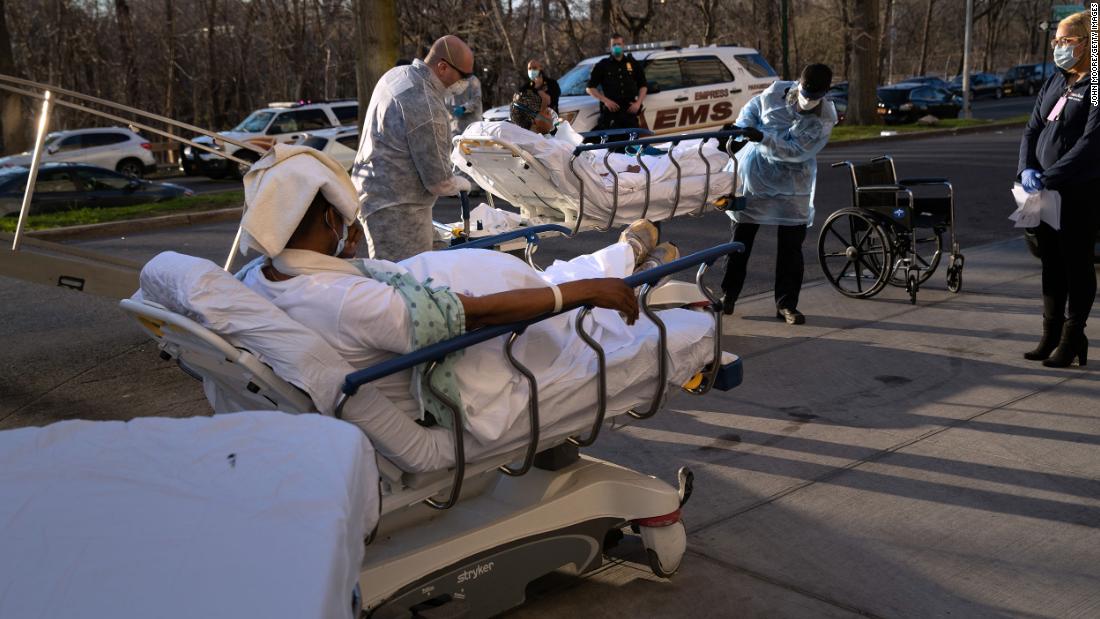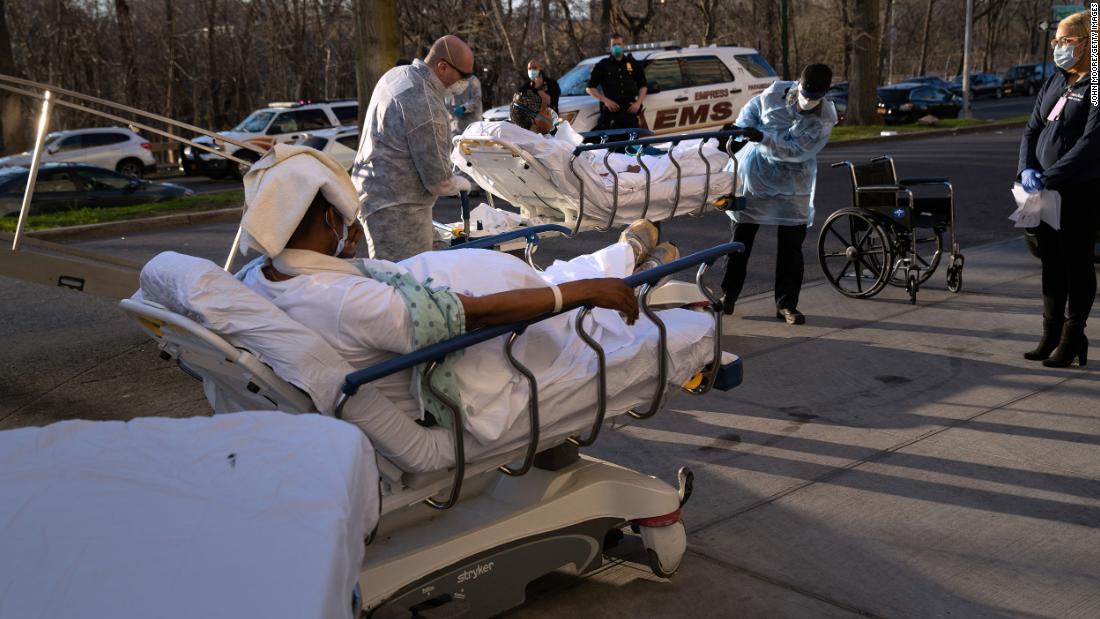Fifteen years later, a new disaster, unleashed by a new disease. Now a desperate cry is coming from every corner of the country. But not everyone is shouting and not everyone is equally desperate.
The reason America has struggled to gain control of this new disease can be found at the intersection of politics, money and culture, rooted in two defining traits of our society in the age of coronavirus: extreme political polarization and rising inequality.
The former encompasses not just partisanship but also related issues like hostility to the media, science and civil servants; the latter is about the relationship between race and socioeconomic status and access to health care coverage.
Rising inequality
The US is one of the most unequal nations in the world, according to
the Organisation for Economic Co-operation and Development, outranked by only a smattering of countries — Bulgaria, Turkey, Mexico, Chile, Costa Rica and South Africa. The coronavirus pandemic and resulting economic shutdown is likely to increase the gap between the haves and have-nots, and doctors and public health experts say socioeconomic status is playing a role in whether a person will survive the disease.
The novel virus does not care about your race or socioeconomic status, but data released by several states suggest your race and socioeconomic status — and everything that goes with it, including access to quality health care — could make a big difference in whether you contract the virus and whether you survive.
While
John Hopkins University’s Global Health Security Index may have ranked the US first out of 195 countries in several areas of pandemic preparedness, it gave the country much lower scores in other key areas. America ranks 175th, for example, when it comes to health care access, which looks at things like out-of-pocket health expenditures per capita and whether a country has mandated universal health care coverage.
Behind America’s enviable wealth and stability, there is another piece of the story — a less photogenic side of the American experience — where racial and economic inequality persist decades after the Civil Rights movement. The aftermath of Hurricane Katrina highlighted it, and today’s crisis is exposing it once again.
For US Surgeon General Jerome Adams, who is black, it’s personal. He has spoken openly about how the virus is hitting poor and minority communities particularly hard.
“I have heart disease and spent a week in the ICU due to a heart condition, and I actually have asthma and I’m pre-diabetic,” Adams told
CBS in an interview Tuesday. “I represent that legacy of growing up poor and black in America and I, and many black Americans, are at higher risk for Covid. It’s why we need everyone to do their part to slow the spread.”
The
racial disparity in fatality rates is startling. According to
figures released this week, African Americans make up 32% of the population of Louisiana, but account for 70% of the coronavirus deaths; they make up 15% of the population of Illinois, but account for 42% of the deaths; and they make up 14% of Michigan’s population but account for 40% of deaths. The disparities in cities were particularly wide, with blacks accounting for 72% of the deaths in Chicago, where they make up just 30% of the population.
The reasons behind these disparities go beyond underlying health conditions, sometimes called co-morbidities.
Lack of health insurance
While health insurance coverage has expanded to more people across the country, in part through the Affordable Care Act, blacks still have consistently lower insurance coverage rates than whites.
According to the National Institutes of Health, racial and ethnic disparities in health insurance coverage rates account for a sizable share of the difference in access to health care.
Blacks are more likely than whites to be poor and to work the kind of low-paying jobs that do not provide health insurance or paid-sick leave, and while
the recent stimulus bill created a $100 billion fund for hospitals — in part
to cover the cost of treatment for uninsured Covid-19 patients — that measure is only for this virus. People who have spent a lifetime without proper access to medical care, especially in the face of chronic conditions, are already at a disadvantage when they arrive at the hospital with coronavirus.
It is no accident that one of the first hospitals to be overwhelmed by Covid-19 patients was in Queens, the New York borough known as the most diverse urban area in the world, with a large immigrant population.
Many in minority communities may also live in homes where it may be more difficult to “social distance.”
In New York, blacks and Latinos make up much of the workforce in the kinds of service sector jobs that may leave them more exposed to the virus — like bus and subway drivers, grocery and convenience store clerks and people who work in food-related services.
Extreme partisan polarization
The red-blue and rural-urban divides are real — with many Republican-led states like Texas and
Florida slower to put in place social distancing restrictions — despite large populations of uninsured residents, in the case of Texas, and elderly residents in the case of Florida — and a handful of largely rural states still holding out.
Ohio’s Republican Gov. Mike DeWine is a notable early exception, deciding early on in the US outbreak to implement social distancing restrictions and to suspend the state’s primary election to protect Ohioans.
“We were messaging ‘You should vote’ and we were messaging ‘stay home,’ and it finally struck me, that just doesn’t make any sense, and that’s not fair and we’re putting people at risk,” the governor explained to CNN’s Chris Cuomo Wednesday night.
Similarly,
Maryland’s GOP Gov. Larry Hogan, chair of the National Governors Association, along with New York Democratic Gov. Andrew Cuomo, the vice chair, has called the messaging from the Trump administration “pretty confusing.” Hogan announced he was mandating the statewide
closure of all non-essential businesses on March 23.
Coronavirus may not care about your political party, but your political party is a strong indicator of how you feel about the threat posed by the virus and the job the federal government is doing to stop its spread.
The latest
CNN poll shows clear majorities of Americans say the federal government has done a poor job of preventing the spread of the coronavirus (55%) and President Donald Trump could be doing more to fight the outbreak (55%). But like most polls during the Trump era, there were stark divisions by party, with 80% of Republicans saying the federal government has done a good job and 85% of Democrats saying the opposite.
Your politics may also impact the seriousness with which you view the kinds of “social distancing” measures experts say are essential to slowing the spread of the illness.
With Easter around the corner, this week, Kansas Republican leaders voted along party lines to revoke Democratic Gov. Laura Kelly’s executive order limiting religious gatherings to 10 people. This comes as the death toll in Kansas jumped 40%, according to Kelly. The state had 1,117 confirmed cases as of Friday afternoon and 42 people had died of the virus, according to a
Johns Hopkins tally.
Other polling has borne out this trend.
In mid-March as the number of US cases grew, an
NPR/PBS New Hour/Marist poll showed nearly twice as many Democrats (76%) as Republicans (40%) viewed the novel coronavirus as “a real threat,” while Republicans were less likely than Democrats to report having canceled plans to avoid crowds.
Republicans may have been taking their cues from Trump and his media allies.
In late February, Trump was still downplaying the threat of the virus —
tweeting on February 24: “The Coronavirus is very much under control in the USA” — and slamming media organizations like CNN for raising the alarm about a disease that had by that point sickened more than 82,000 people in more than two dozen countries.
Hostility to the media, experts, science and civil servants
In the weeks since, Trump has become a fount of information, not all of it accurate, dispensed nearly daily from the White House briefing room podium to reporters he continues to blast as “fake news” and “terrible.” Trump and his allies have consistently slammed the “mainstream media” and raised doubts about experts at every level. This crisis is no different and yet the consequences could be even more dire.
“I wish we had a fair media in this country,” Trump told White House reporters on Tuesday at the same briefing in which
he dismissed a
report by the Department of Health and Human Services inspector general — the first internal government look at the response.
Based on a survey of 323 hospitals in 46 states and Puerto Rico,
the assessment showed hospitals were facing a “severe” and “widespread” shortage of needed medical supplies, hampering the ability to test and respond to the coronavirus adequately and protect medical staff.
Instead of responding to a reporter’s question about the shortages, the President questioned the political leanings of the HHS inspector general herself and suggested the report’s conclusions were “political.”
Trump has continued to
tout hydroxychloroquine, which has not been proven effective to treat coronavirus, despite Dr. Anthony Fauci, the nation’s top infectious disease expert and a member of his coronavirus task force, among others,
consistently warning against taking the drug. Last weekend, the President even
prevented Fauci from answering a question about the drug’s effectiveness against coronavirus.
The stakes for dismissing expertise are particularly high now — when lives are at stake.
What will we learn?
A lot needs to happen for this crisis to end, including implementation of a vigorous testing regime to identify and track new infections. But Americans have a big part to play in getting us to a post-coronavirus America — both in how we choose to act and what we choose to believe.
Can we bridge the partisan divides, address the inequality that characterize this current climate and get behind the idea that “We’re all in this together” by strictly adhering to stay-at-home orders? Or will mixed messages and confusion continue, particularly at the federal level?
And what about the future? Will this pandemic lead to changes to the way that the economy functions, with a stronger safety net for the low-income and the left-behind, including increased access to health care?
These debates will likely continue long after this is over. One thing most everyone with expertise agrees on? How this ends — and what we learn from it — will depend on us.


